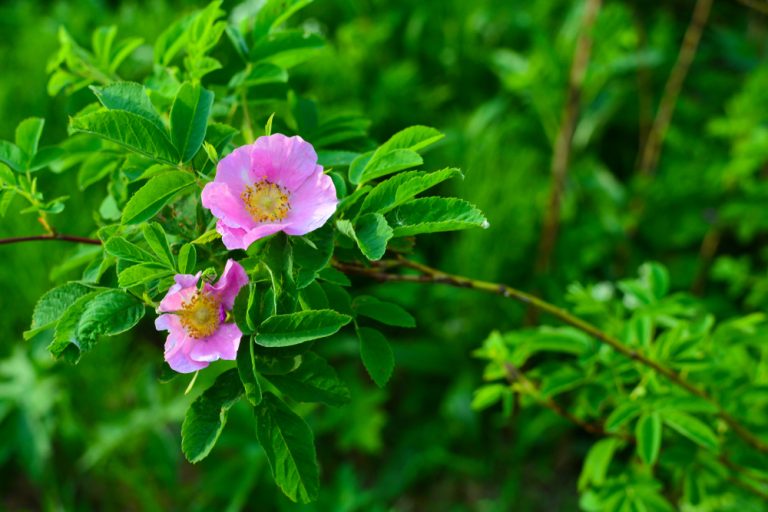The wild rose is a wealth of active ingredients with medicinal properties. It is characterized by a very high dose of vitamin C with a strong antioxidant effect. It has been shown that eating 2-3 fruits a day allows us to cover the demand for vitamin C. Its content depends on when we pick wild rose fruits, how we store and dry them. In 100 g of fruit, there is up to 1200 mg of this vitamin, which is more than in citrus fruit. It is worth noting that its bioavailability is increased by the presence of flavonoids.
Wild rosehip properties
Wild rose fruits contain other natural antioxidant vitamins A and E. They also contain B vitamins, vitamin K, iron and folic acid. Wild rose is also rich in bioflavonoids - active compounds, as well as tannins, essential funnels and malic and citric acids.
The wild rose blooms in May and June. Then the rose petals are collected, and it is best done during sunny weather... Then the petals should be dried in a well-ventilated and dry place, but not directly in the sun, as it will lose its colour. Wild rose fruits should be harvested in the autumn when they are ripe. The harvested fruit should undergo a drying process. They can also be frozen so that they do not lose their nutritional value.
Healing properties of wild rosehip
Thanks to a very high content of natural vitamin C, the wild rose fruit strengthens the immune system and has an anti-inflammatory effect, which is why it is worth to use it to support the treatment of colds and flu conditions. The fruit extract has diuretic properties, so it supports the treatment of urinary tract infections. Both fruit and juice are also recommended in states of weakness and general tiredness. The wild rose has a supportive effect on digestive tract diseases - stomach and duodenal ulcers, it is also a good home remedy for diarrhoea. The fruit supports the functioning of the cardiovascular system and is used as a remedy for vitamin C deficiency and scurvy.
Properties of rosehip
- The antioxidants they contain remove free radicals from the body, protecting the cells from rapid ageing (and cancer changes)
- Fatty acids present in the wild rose are used to treat skin burns and wounds.
- Pectins, vitamins and fruit acids improve the condition of the skin, having a moisturising and smoothing effect
- The compounds contained in the fruit show exfoliating properties, which is used to treat acne changes in the skin
- Fruit acids intensify the biosynthesis of skin ceramides, preventing skin dryness and roughness
- Vitamin A protects against the occurrence of discolouration and pigmentation spots on the skin
- B vitamins are helpful in the treatment of seborrheic lesions
Fruit, rosehip oil - how and for what?
Wild rose fruits are used in a variety of applications in the herbal, pharmaceutical and cosmetics industries. They can be used to prepare many products for food and medical purposes.
Dried rosehip
Tasty wild rose fruits can be eaten alone as a source of natural ingredients to ensure youthfulness. They provide a complex of vitamins necessary for a balanced daily diet. Dried rosehip can be used to prepare a warming tea.
The products are also characterized by high nutritional value, as well as a pleasant taste and aroma. Wild rose jams, juices, syrups and soups are most common. The fruit is also used as an addition to other fruit preparations such as jam or compotes. At the same time, these preserves provide a large dose of iron.
Rose oil
Wild rose oil produced from flower petals is used in the cosmetics industry as an aromatic additive to perfumes, creams and soaps. It is especially used in the production of skincare products for sensitive skin. Other properties include a calming and antidepressant effect. Rose oil soothes headaches, has an antibacterial and soothing effect on the skin.






